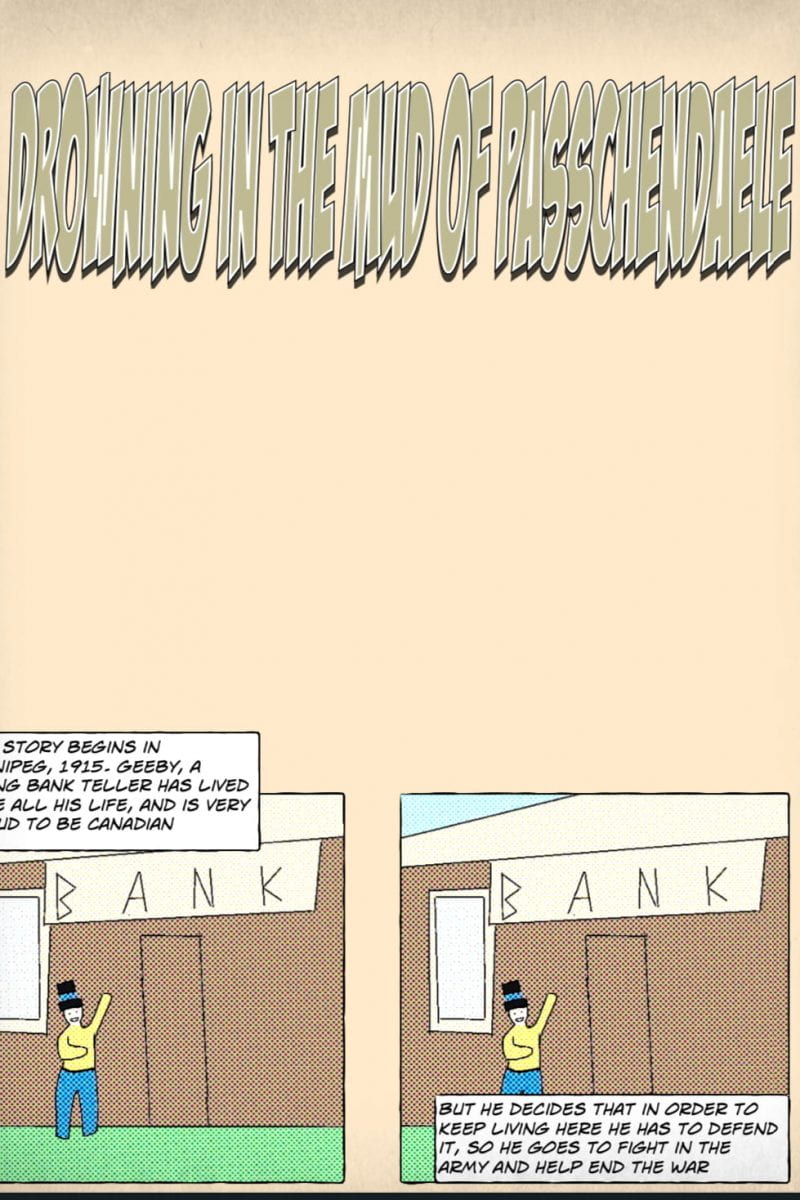When most people think of mud they think of soggy dirt to wipe off their shoes, unless you’re soldiers in 1917. In that case you better hold your breathe! In other words I’ve completed project unfortunately labelled: “A War To End All Wars: Graphically Told” in Humanities 9. Where we learnt about WW1, and chose a specific battle to research and make a comic about.
Before we dive into the meat of WW1 we looked at how it began, which also functioned as our introduction to cause and consequence.
Cause and Consequence is that each action taken has a cause, and the result of each action is your consequence. For example:
- Long term cause (happens long before the action): The company you work for is running out of money
- Short term cause (happens recent to the event): You lose your job
- Action: Robbing the market for food
- Immediate Consequence (happens shortly after action): You now have food to eat
- Secondary / Long Term Consequence (happens after immediate consequence): You get caught when the employees check security cameras and you are fined.
That is the idea of cause and consequence, we used this idea to understand how WW1 began. Above this is one of the videos we watched, and it can explain the process much better than I can here.

In order to learn about the average life of a soldier in WW1, we read through the “WW1 Graphic Novelization” and this was such a good read and insight. We often used the novel as a comparison for everything else we learned, and a lot of people including myself used parts of it to inspire parts of our comics.
To make a comic we need to learn some big fancy comic vocabulary. Things like emanata, splash marks, gutters, and open panels. These were quite fun to learn and helped us fit the comic aesthetic and find more creative storytelling.
We now get our topic! I ended up getting Passchendaele which i’m super happy about, that battle is super intriguing. When we got our topic we began to research our 5 Ws, then other additional information to create the comic. My 5 Ws:
To plan the comic we used story spines and story boards. While I will show you my story board I dont like it and a lot changed between it and my final product. While it made sense in my head thats only because I made it, and wouldn’t be clear to other people:
Then we moved onto creating the comic. This was a good opportunity to learn how to be efficient in projects like this. Mainly a lot of re-doing things because I didnt do them in the best order.
The comics went through a couple peer critiques which were super helpful revisions to create the best comic possible. Thanks to those revisions I was able to create the comic at the top of this post!
Surprisingly fast we are at the driving question of:
“How might we use graphic novels to understand Canada’s involvement in WWI?”
A graphic novel is a way to communicate a story, and creatively as well. The comics we’ve created do just that, they are the answer to the driving question. Being able to write and visual stories of Canada in WW1 and create a full compelling story is how you would do so.
We have hit the end of the project! While I did enjoy this project some more time could have been given to us for our final product, I know a lot of us are very busy. However we were all able to create really cool final products and I encourage you to check some of them out! I learnt a lot of from this project, and im sure it will connect into next years learning of WW2 (the war to end all wars part 2, anyone?).






